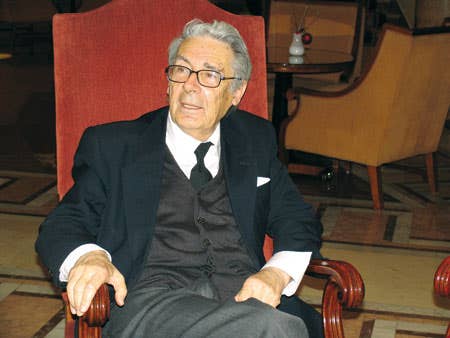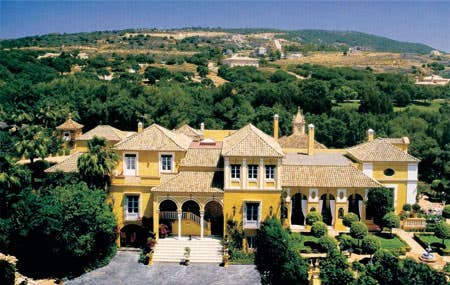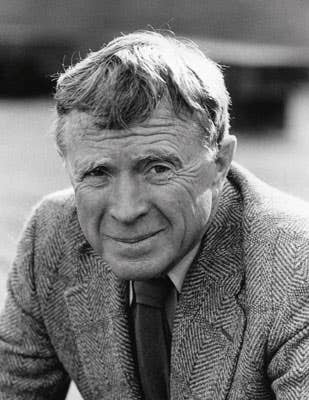
Features
Rafael Manzano Martos wins 2010 Driehaus Prize



Rafael Manzano Martos has been named the laureate of the 2010 Richard H. Driehaus Prize for Classical Architecture. The $200,000 annual prize is presented by the University of Notre Dame and is awarded to a practicing architect whose work exemplifies traditional and Classical architecture, respects historic continuum and preserves the built and natural environments.
Presented in conjunction with the Driehaus Prize, Vincent J. Scully has been named the recipient of the $50,000 Henry Hope Reed Award, which honors an outstanding individual who supports Classical architecture by working outside of the field.
Manzano, a Spanish architect, restorer, urban planner and professor, has dedicated his life’s work to the study of architecture, art and urban world history while cultivating an admirable reputation for his use of the Mudéjar style – a style derived from the merging of Muslim and Christian cultures during the 12th century on the Iberian Peninsula. His work, in both commercial and residential building, can be found in Spain and the Middle East.
“Rafael Manzano Martos discovered a love for architecture in his native southern Spain,” says Michael Lykoudis, dean of the University of Notre Dame School of Architecture. “In Cadiz, Sevilla, Granada, and Cordoba, his work reflects the region’s vibrant cultural environment of unity and diversity. His buildings speak the universal language of Classical architecture with a distinctly Spanish inflection.”
After receiving his degree and doctorate from the Architecture School of Madrid (Escuela Técnica Superior de Arquitectura de Madrid), Manzano worked as a lecturer and held several different director positions in Seville, Spain. Between 1970 and 1991, Manzano served as the Director-Curator and Governor of the Royal Fortresses (Realse Alcazares) in the City of Seville. The royal palace is a compound of fortresses built in the 9th century and is considered one of the best surviving examples of the Mudéjar style. During Manzano’s directorship, he focused on exploring and learning the architectural systematization and decorations of the compound. Hidden ditches, archeries, hollows and galleries were found and restored to their original forms.
After analyzing rubble collected during excavations, Manzano led the reconstruction of a courtyard, garden and main façade for the House of Trades (La Casa de Contratación). He was also a member of the Royal Board of Trustees of La Alhambra and El Generalife in Granada, where he led the constructions committee and advised on numerous restorations, earning him the Shiller Prize for Building Restoration. His most important archaeological contribution was during his time as director and restorer for the City of Calphs in Medina Azahara, Córdoba.
“When architecture loses worth with vulgarity and repetitive forms that are not contributing at all to the cities’ interest, there’s always a flashback to classic values,” says Manzano. “This allows the architect to face the eternal laws of beauty inherited from the ancient world. This language has been spoken, at every century, with different accents, with a new prosody. This has to be applied to our century too, without any renounce to modern concepts, applied to the specific functions of every building, to the new linguistics imposed to our times.”
Manzano’s famed Hispano-Arab architecture has crossed the Mediterranean Sea and can be found in the Middle East. His reputation has led to projects such as a hotel in Mosul, Iraq, and a commercial, hotel resort and shopping complex in Riyadh, Saudi Arabia. He is also an advisor for the restoration of the city of Testour, Tunisia. His other well known works include a former convent restored and readapted as the Notary College (Colegio Notarial) in Seville, Spain; Curro Romero’s house (now the property of Julio Iglesias) in Marbella, Spain; and the addition and restoration of Cathedral of Huelva (Catedral de Huelva) in Huelva, Spain. He is currently working on a residential complex, hotel and spa in the surroundings of Baños de Hedionda, Málaga.
Since the 1950s, Scully has sounded against “urban renewal” efforts and has been on the front lines of the preservation movement advocating livable and sustainable living while condemning sprawl as the downfall of historic American landscape. His battles, fought and won, include saving the library and City Hall in his native, New Haven. Scully is Yale’s Sterling Professor Emeritus of the History of Art, as well as Trustee Emeritus of the National Trust for Historic Preservation. He was also awarded the National Medal of Arts – the highest honor in the U.S. for artists and art patrons.
Richard H. Driehaus, founder and chairman of Driehaus Capital Management in Chicago, IL, established the Driehaus prize program in 2003. The Henry Hope Reed Award was launched in 2005. Past Driehaus laureates include architects Abdel-Wahed El-Wakil (2009), Elizabeth Plater-Zyberk and Andrés Duany (2008), Jaquelin T. Robertson (2007), Allan Greenberg (2006), Quinlan Terry (2005), Demetri Porphyrios (2004) and Léon Krier (2003). In addition to Richard H. Driehaus and Michael Lykoudis, the jury consists of Robert Davis, developer and founder of Seaside, FL; Adele Chatfield-Taylor, President of the American Academy in Rome; Paul Goldberg, architecture critic for The New Yorker; Léon Krier, inaugural Driehaus Prize laureate and author; and David M. Schwarz, principal of David M. Schwarz Architects, Inc. TB









